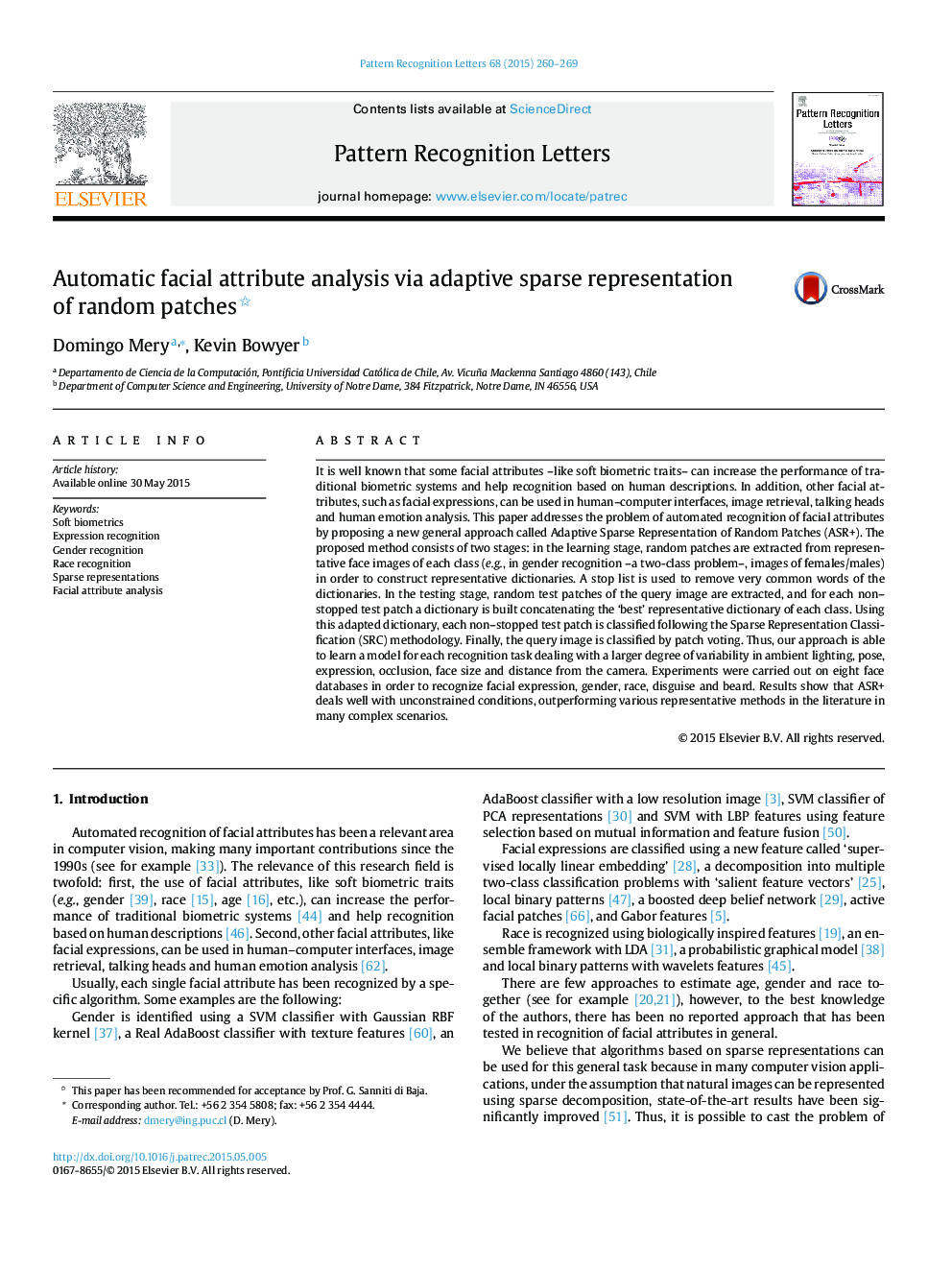| Article ID | Journal | Published Year | Pages | File Type |
|---|---|---|---|---|
| 534003 | Pattern Recognition Letters | 2015 | 10 Pages |
•A new general algorithm that is able to recognize a wide range of facial attributes.•It has been evaluated in the recognition of expressions, gender, race, disguise and beard.•It obtained a performance at least comparable with that achieved by state-of-art techniques.•It proposes a new representation for the gallery images based on random patches.•It proposes a new representation for the testing image using sparse representations.
It is well known that some facial attributes –like soft biometric traits– can increase the performance of traditional biometric systems and help recognition based on human descriptions. In addition, other facial attributes, such as facial expressions, can be used in human–computer interfaces, image retrieval, talking heads and human emotion analysis. This paper addresses the problem of automated recognition of facial attributes by proposing a new general approach called Adaptive Sparse Representation of Random Patches (ASR+). The proposed method consists of two stages: in the learning stage, random patches are extracted from representative face images of each class (e.g., in gender recognition –a two-class problem–, images of females/males) in order to construct representative dictionaries. A stop list is used to remove very common words of the dictionaries. In the testing stage, random test patches of the query image are extracted, and for each non–stopped test patch a dictionary is built concatenating the ‘best’ representative dictionary of each class. Using this adapted dictionary, each non–stopped test patch is classified following the Sparse Representation Classification (SRC) methodology. Finally, the query image is classified by patch voting. Thus, our approach is able to learn a model for each recognition task dealing with a larger degree of variability in ambient lighting, pose, expression, occlusion, face size and distance from the camera. Experiments were carried out on eight face databases in order to recognize facial expression, gender, race, disguise and beard. Results show that ASR+ deals well with unconstrained conditions, outperforming various representative methods in the literature in many complex scenarios.
Graphical abstractFigure optionsDownload full-size imageDownload high-quality image (162 K)Download as PowerPoint slide
